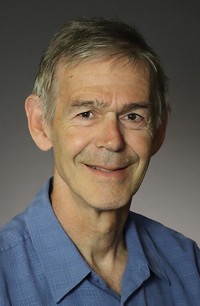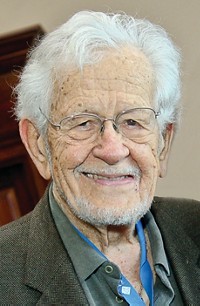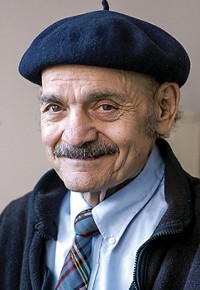Advertisement
Grab your lab coat. Let's get started
Welcome!
Welcome!
Create an account below to get 6 C&EN articles per month, receive newsletters and more - all free.
It seems this is your first time logging in online. Please enter the following information to continue.
As an ACS member you automatically get access to this site. All we need is few more details to create your reading experience.
Not you? Sign in with a different account.
Not you? Sign in with a different account.
ERROR 1
ERROR 1
ERROR 2
ERROR 2
ERROR 2
ERROR 2
ERROR 2
Password and Confirm password must match.
If you have an ACS member number, please enter it here so we can link this account to your membership. (optional)
ERROR 2
ACS values your privacy. By submitting your information, you are gaining access to C&EN and subscribing to our weekly newsletter. We use the information you provide to make your reading experience better, and we will never sell your data to third party members.
People
Robin Hochstrasser, Spectroscopy Pioneer, Dies At 82
University of Pennsylvania chemist built the foundations for today’s ultrafast science
by Celia Henry Arnaud
March 4, 2013

Robin M. Hochstrasser, 82, the Donner Professor of Physical Sciences at the University of Pennsylvania, died on Feb. 27. The university did not identify a cause of death.
“The world has lost a first-rate spectroscopist and physical chemist whose work laid the foundation for some of today’s leading advances in ultrafast science,” says Ahmed H. Zewail, 1999 chemistry Nobel laureate and a professor of chemistry at California Institute of Technology, who was one of Hochstrasser graduate students.
“Robin Hochstrasser was a true pioneer in modern physical chemistry and chemical physics,” says Michael D. Fayer, a chemistry professor and spectroscopist at Stanford University. “In the early days of his career, physical chemistry was dominated by the study of small molecules in the gas phase. His early work motivated a major shift in the direction of physical chemistry as he pulled the community along with him into the study of liquids, solids, and biological systems.”
Hochstrasser is best known for his work on ultrafast spectroscopy and two-dimensional infrared spectroscopy. Much of his recent research focused on biological applications of spectroscopy to topics such as protein folding and amyloid structures.
William A. Eaton, chief of the Laboratory of Chemical Physics at National Institute of Diabetes & Digestive & Kidney Diseases, was an early Hochstrasser graduate student. “We were best friends for 48 years, so it is a devastating loss for me,” Eaton says. “In addition to Robin’s extraordinary brilliance and incredible creativity, his enthusiasm and passion for science, and everything that interested him, made it so enjoyable and worthwhile to be with him. He did not slow at all with age, and I know that he was working hard and thinking about new experiments until just days before his death.”
Paul H. Axelsen, a professor in the departments of Pharmacology, of Biochemistry & Biophysics, and of Medicine at the University of Pennsylvania School of Medicine, collaborated with Hochstrasser for nearly 20 years. “It was magnificent to behold such a strong, creative, and agile intellect wrestle with subtle intricacies of amyloid fibril structure or the behavior of protein-embedded water molecules, even just days before his death,” Axelsen says.
A native of Scotland, Hochstrasser received a B.Sc. in applied chemistry in 1952 from Heriot-Watt University, in Edinburgh, and a Ph.D. in chemistry in 1955 from the University of Edinburgh. After graduation, he spent two years in the Royal Air Force, where he taught electronics to RAF navigators.
In 1957, he joined the University of British Columbia, Vancouver, as an instructor of chemistry. He took leave in 1961 to study at the National Research Council in Ottawa and at Florida State University. In 1963, he joined the faculty at Penn, which became his permanent scientific home.
Hochstrasser received numerous awards and honors, including the Ahmed Zewail Award in Ultrafast Science & Technology, the Peter Debye Award, the E. Bright Wilson Award in Spectroscopy, the F. Albert Cotton Medal, and the Benjamin Franklin Medal. He was a member of the National Academy of Sciences, the American Academy of Arts & Sciences, and the American Chemical Society, which he joined in 1972.
He is survived by his wife, Carol; daughter, Jennie; and grandchild, Finnian Kasregis.





Join the conversation
Contact the reporter
Submit a Letter to the Editor for publication
Engage with us on Twitter